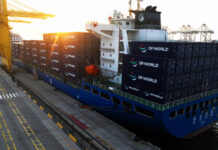
The Hamburg Port Authority has unveiled the SeaClear 2.0 robotic system in a live demonstration at its Harburg facility marking the first public showcase of this advanced technology.
Developed as part of a European Union research initiative, the SeaClear 2.0 project aims to leverage autonomous robotics to efficiently detect, classify, and remove marine debris from both the water surface and seabed.
This next-generation system integrates unmanned surface and underwater vehicles, supported by aerial drones. Equipped with artificial intelligence and high-resolution sensors, SeaClear 2.0 is designed to operate in hard-to-reach or hazardous areas with minimal human input.
Among its upgraded features are a robust robotic gripper capable of retrieving larger debris and an escort vessel to transport recovered waste back to shore.
SeaClear 2.0 builds upon its predecessor, SeaClear, which was introduced in 2022. The current phase of the project is part of the EU’s “Restore Our Oceans and Waters” mission, positioning it at the forefront of innovation in marine environmental cleanup.
The ultimate goal is to develop a fully autonomous system composed of drones, unmanned surface vehicles, remotely operated underwater vehicles (ROVs), and intelligent robotic arms, enabling seamless and efficient marine litter recovery.
Lennart Kinau, Head of Strategy and Communication at the HPA, emphasized the project’s significance saying that by integrating robotics, AI, and digital twins, we are delivering practical, forward-looking solutions to pressing environmental challenges.





